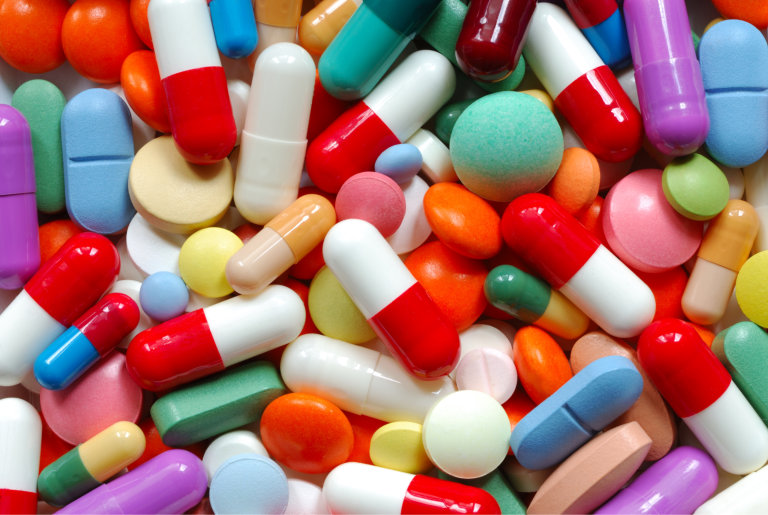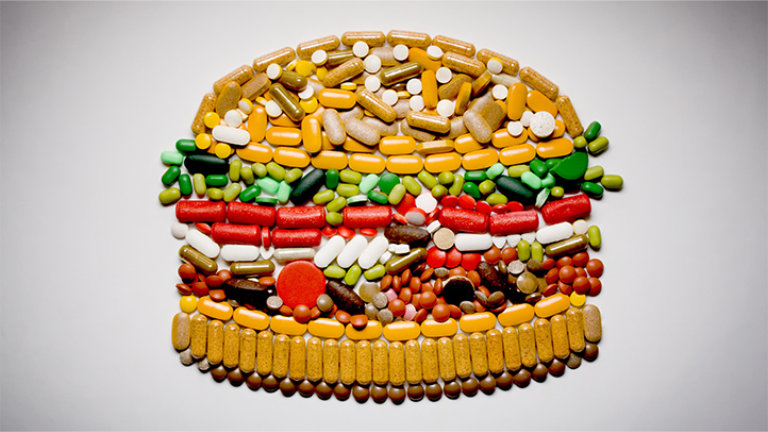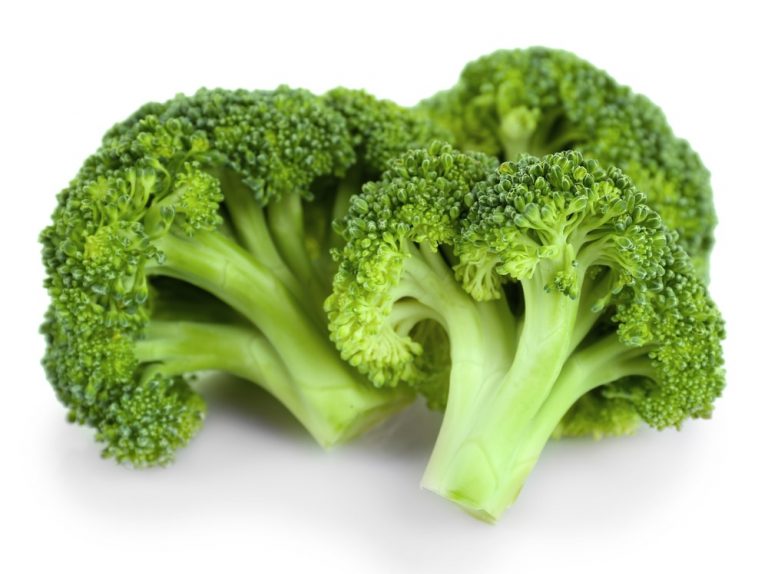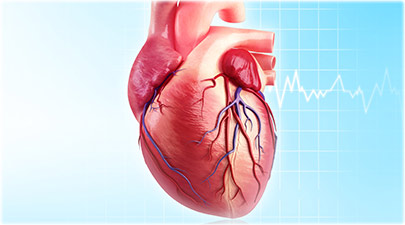Far too many people are daily popping pills like peanuts for one or other real or imaginary physical or emotional discomfort, hoping that these “harmless little helpers” will restore their health or fix the problem.

Pills macro
The problem is, chronic medication does not “fix” any problem – it only keeps you hooked on them for life to “manage the symptoms” while the true CAUSE of the ailment(s) is never addressed and gets worse and worse, leading to other ailments?
Did you know there is NO pill or medication that does NOT have side-affects – some even much worse than the condition it is supposed to keep under control? The old sage – you are what you eat – has stood the test of time and people often forget that medication is also “food” and absorbed through the same digestive system as healthy, nutritious food. The latter just have no side-effects and are much cheaper.

When some medical practitioners scoff at “healthy food/diets to help fix ailments” one can only wonder what they think medication is other than “chemical food” that is absorbed and digested like any other food?

The difference is that even “innocent” off the counter pain killers like Grandpa’s, aspirin and paracetamol have serious side-effects that most people are totally unaware of. Besides that some of them are addictive, they also change your brain function and make you less caring and emphatic towards others as it not only blocks physical pain, but also emotional pain and awareness . . .
It is sad but true that millions of people are on chronic medication that they do not need and which harms them and causes a magnitude of other problems. Most people over 50 somehow believe it is “normal” for their age group to be on chronic blood pressure and cholesterol medication in order to “prevent” heart attacks . . .
Fact is that most of modern day’s so-called chronic diseases are stress-related and can be prevented or cured by a simple adaption to eating and lifestyle habits . . .
1. Get the heart pumping by doing some outdoor vascular exercise that you actually enjoy – whether it is cycling, swimming, jogging or chasing the dog/kid around the block – as long as your chest heaves and you gasp for breath!
2. Lose extra weight by eating less (or less junk food) and keep filling foods at hand like bananas, red grapes and carrots to munch on between meals. If you start the day with freshly squeezed lemon juice in hot water, you are already halfway there – as it alcalines the body and provides you with Vit C.
 Two bananas for breakfast alone might provide you with the potassium your brain/body craves and it fills you up! It will even lower your blood pressure naturally if you don’t mix it with ice-cream etc. into a banana split!
Two bananas for breakfast alone might provide you with the potassium your brain/body craves and it fills you up! It will even lower your blood pressure naturally if you don’t mix it with ice-cream etc. into a banana split!
Magnesium is probably the most UNDER-estimated mineral for a healthy body and mind. Just by eating a good serving of steamed broccoli three times a week may alleviate MANY ailments in MANY people.
MANY people.
3. Pills and medication can’t compensate for the natural healing forces to be found in nature. The sun, the sea and outdoor landscapes do magic tricks to the brain and subsequently to every cell in the body.
4. Most importantly – No pill or medication can be a substitute for love and laughter . . . laugh more and the stress will vanish and the love will follow . . . still the best medication and the strongest healing force in the universe for ANY ailment!

Here are some interesting research results re painkillers and blood pressure tests and medication:
Common painkillers are changing the brain
After a mass shooting, people often suspect the perpetrator was on some medication that could have pushed him over the edge—and they could be right. Even everyday over-the-counter painkillers change the way the brain functions, and reduce empathy to others, a new study has discovered.
Common painkillers such as ibuprofen, aspirin and paracetamol alter sensitivity to painful experiences, and make the user less empathetic, and affect the way the brain processes information.
The findings are ‘alarming’, said researchers at the University of California at Santa Barbara, and health watchdogs should be made aware of the potential harm that the drugs—none of which need a prescription—could be doing.
“Consumers assume that when they take an over-the-counter pain medication, it will relieve their physical symptoms, but they do not anticipate broader psychological effects,” said lead researcher Kyle Ratner.
In a review of previously-published studies, the researchers say that the painkillers blur the distinction between physical and social pain. They don’t just blunt pain, they can also “hinder people’s ability to put themselves in another person’s shoes, and feel that person’s emotional and physical pain”, the researchers say.
https://wddty.com/news/2018/02/common-painkillers-are-changing-the-brain.html
More than half of heart attacks never detected
Many of us may have suffered a heart attack without ever knowing it and yet lived to tell the tale without ever taking any medication. Around 63 per cent of heart attacks (myocardial infarctions, or MIs) are never picked up in routine examinations, a new study has discovered.
 Around half of those who suffer an MI without knowing it are still alive 10 years later, a similar rate to those whose heart attack had been picked up by a scan such as an electrocardiogram or cardiovascular magnetic resonance (CMR).
Around half of those who suffer an MI without knowing it are still alive 10 years later, a similar rate to those whose heart attack had been picked up by a scan such as an electrocardiogram or cardiovascular magnetic resonance (CMR).
A research team from the National Institutes of Health discovered the phenomenon of the undetected heart attack when they examined the health of 935 elderly patients living in a care home in Reykjavik, Iceland, who had an average age of 76. After undergoing a heart scan, the researchers discovered that 10 per cent had suffered a heart attack that a previous scan had already identified—and yet 17 per cent of the whole group had unwittingly had a heart attack that had never been diagnosed. “That means 63 per cent of the MIs identified by CMR were missed in routine medical care. Unrecognised MI may be more common than recognised MI,” said study team leader Tushar Acharya.
Yet whether or not the heart attack had been diagnosed, the survival rate was roughly the same after 10 years, at 49 per cent for an unrecognised attack and 51 per cent for a diagnosed MI.
What is surprising about the similar mortality rates is that the patient whose heart attack hasn’t been diagnosed will not have been prescribed the usual medications to prevent a further attack, such as statins, beta blockers or ACE (angiotensin converting enzyme) inhibitors. They would also have continued with a lifestyle that could have contributed to the attack in the first place, such as smoking, not exercising or an unhealthy diet, Dr Acharya said.
Maybe all the heart truly needs is LOVE? 
Lower your blood pressure without drugs
New guidelines now define half of all adults as having dangerously high blood pressure, requiring drugs for the rest of their lives. Lynne McTaggart and Bryan Hubbard offer alternatives to your doctor’s prescription
If you didn’t have high blood pressure before, there’s a good chance you do now.
New guidelines released by the American Heart Association during its annual meeting in November 2017 have drastically lowered the threshold for blood pressure readings considered indicative of hypertension, making an extra 600,000 people in the US alone immediate candidates for anti-hypertension drugs.
This new definition places virtually one-half of all adults in a category of having dangerously high blood pressure levels literally overnight. Under these new guidelines, some 30 million Americans in total are now classified as having hypertension. Although many will be advised by their doctors to control their condition through lifestyle and dietary modifications, the majority will be handed a prescription.
The latest guidelines redefine hypertension as any blood pressure reading that is 130/80 or above—far lower than the threshold of 150/90 at which hypertension was diagnosed three years ago, and in fact the lowest threshold ever used to assess high blood pressure.
Medicine tells us that around one in three adults has hypertension, often described as a ‘silent killer’ because of the damage it can cause to the heart and arteries. High blood pressure may be a precursor of heart attack, heart failure, stroke and kidney disease, according to modern medicine, but the definition of what pressure is in fact too high has largely been a matter of fashion as much as science (see box, page 33). Back in the 1980s, for instance, hypertension was diagnosed with a reading of 160/100 (the first number measures systolic pressure, when the heart contracts to pump blood, and the second is the diastolic pressure, when the heart is at rest).
Lowering the bar is a goldmine for manufacturers of antihypertensive drugs like ACE (angiotensin-converting enzyme) inhibitors, beta blockers, calcium channel blockers and diuretics (‘water pills’). Currently, sales of antihypertensive agents throughout the developed world are upwards of $26 billion each year, making it one of the most successful drug groups prescribed today. Under the new guidelines, that number is set to rise.
Furthermore, the antihypertensive drugs given to patients with high blood pressure often increase their chances of suffering the very heart attack they believe the drugs are helping to avoid. One type of antihypertensive drug—calcium channel blockers—actually triples the risk.
Although high blood pressure is seen as one of the most common health risks we face as we grow older, the standard method of measuring it is so seriously flawed that many millions of people believe their health is in jeopardy when it isn’t, and are consequently taking drugs they don’t need. Despite what doctors tell them, their health may not be at risk, and they may have every chance of living just as long as people who have ‘normal’ blood pressure. In fact, because the wrong measurements are often taken, it’s safe to say that the majority of prescriptions for hypertension are unnecessary.
Despite these shortcomings, the American Heart Association says that hypertension is ‘easily detected and usually controllable,’ while at the same time admitting that the death rate from hypertension rose by 19.5 percent between 1996 and 2006 in the United States. The truth is that only a minority (a quarter to a third) of patients on one or more of a variety of drugs have their blood pressure under control.
Bottom line: the tests are suspect, the drugs don’t work, and if you do turn out to have high blood pressure, it’s relatively easy to get your blood pressure down to normal simply by making a few simple lifestyle changes.
Why you may not have high blood pressure
There are three good reasons why you should distrust your blood pressure readings and check things out far more before you consent to taking drugs to manage your condition.
1. Your blood pressure doesn’t stay static, but rises and falls throughout the day, depending on your circadian rhythms and even your mood. It’s highest in the morning, it can even differ from one arm to the other, and emotions like anxiety from stress can have an enormous effect on a reading. Just sitting in a waiting room, waiting for your doctor to take your blood pressure, can cause your systolic pressure—the first number—to rise by as much as 30 mmHg, a phenomenon referred to as ‘white-coat hypertension.’ Professor William White of the University of Connecticut’s Pat and Jim Calhoun Cardiology Center, who specializes in clinical hypertension and vascular diseases, says that blood pressure can vary by as much as 30 mmHg over the course of a day.
2. Doctors are prescribing them based on the wrong readings. According to one theory, called isolated systolic hypertension (ISH), systolic pressure is the only figure that matters in people over 50, while the diastolic level is all but irrelevant as we get older, especially for men.
3. The equipment, even the means of taking blood pressure, is hopelessly inaccurate. The University of Connecticut’s Professor White has referred to the sphygmomanometer—the typical blood-pressure cuff—as ‘medicine’s crudest investigation.’
The first number only
According to the prestigious Framingham Heart Study, an ongoing study of cardiovascular disease in more than 5,000 people living in the small town of Framingham, Massachusetts, since 1948, an estimated 65 percent of all cases of hypertension in the elderly are caused by ISH—raised systolic pressure together with an increase in pulse pressure (the difference between the systolic and diastolic pressures). However, the need to focus solely on the systolic measurement has not been translated into clinical practice.2
In fact, researchers from the University of Minneapolis have estimated that some 100 million Americans and around 20 million Brits have what’s considered an ‘abnormal’ blood pressure reading that poses no threat to either health or longevity, but still marks them as candidates for an antihypertensive drug. That figure is now set to rise even further with the new guidelines for determining hypertension.
After studying the health and longevity of nearly 14,000 Americans aged 25 to 75 with different blood pressure levels,and analyzing their systolic and diastolic levels by age and mortality rate, the researchers, led by Brent Taylor, discovered a strange anomaly.3
Among people over 50, there was a direct link between diastolic blood pressure and death: as the diastolic pressure increased, so did the risk of death, especially with readings higher than 90 mmHg. However, that risk disappeared completely when the systolic reading was factored in. Having a normal systolic reading neutralized a diastolic level that conventional medicine considered life-threatening.
In fact, the researchers found that systolic pressure was a far more important gauge of health risk among people over 50, whereas the diastolic pressure meant nothing.
The reverse was true for those under 50. This suggests a completely new way of assessing blood pressure, one that is dependent on age and perhaps gender, as the systolic reading seems even more significant in men.
A powerful predictor
The ISH theory has been gaining prominence in recent years as evidence shows how accurate a predictor it is, especially for older patients. In a review of eight separate studies, a team at the University of Leuven in Belgium examined the health records of nearly 16,000 people aged 60 years and older with blood pressure readings of 160/95 mmHg or higher and found that only the systolic reading was an accurate predictor of fatal and non-fatal heart complications.
Every 10-mmHg increase in systolic pressure correlated with a nearly 10 percent increase in heart risk, while, again, the diastolic reading provided no helpful indication of future heart health problems.4
The Belgian researchers concluded that doctors were misjudging the health dangers—and prescribing antihypertensives inappropriately—when they factored in both systolic and diastolic blood pressure.
Japanese researchers confirmed that systolic pressure alone was an accurate indicator of heart problems in both the young and old. A 19-year study involving nearly 3,800 men of all ages revealed that raised systolic pressure was an independent risk factor for cardiovascular disease, whereas a raised diastolic reading was insignificant regardless of age. A high systolic pressure increased the risk of cardiovascular disease by 1.5 times in 30- to 64-year-olds, by 1.7 times in 64- to 74-year-olds and by 1.2 times in those aged over 75.5
A French study went further and suggested that a ‘normal’ diastolic reading was more dangerous than a higher one. In a review of data from nearly 125,000 men and women—all of whom were healthy at the beginning of the eight-year study—the researchers found that an increase in systolic readings was directly correlated with heart disease and death. On the other hand, the diastolic measure was irrelevant if the systolic reading was normal. Even a high diastolic reading—normally considered a sign of hypertension—was found to have no bearing on future health.
In fact, a normal diastolic reading was more dangerous in men (but not in women) who had raised systolic levels compared to those with even a moderate increase in diastolic pressure.6
Inaccurate readings
Then there is the blatant inaccuracy of the equipment itself. One study that tracked the progress of patients in a hospital emergency room found that blood pressure readings were wrong in almost every case. Exploring further, the researchers discovered that the automated blood pressure-measuring equipment was faulty and failed to meet even the most basic criteria laid down by the international Association for the Advancement of Medical Instrumentation.7
In another study of men aged over 65, most were victims of ‘pseudohypertension,’ an incorrect or faulty reading of high blood pressure due to arterial stiffness (in medical-speak, a lack of ‘arterial compliance’) often seen in older adults, or caused by some other error. While the blood pressure cuff was reading a pressure of 180/100 mmHg, the true pressure—on average—was just 165/85 mmHg, which some doctors still consider normal in such elderly patients.8
Blood pressure can increase with physical exertion, stress of any kind, the temperature of the room, a full bladder, or eating, drinking or smoking within an hour of having the test. Even an animated conversation can temporarily raise your blood pressure by as much as 50 percent.
Your blood pressure can even vary between arms. The most accurate readings are taken from the left arm, and researchers have found a difference of as much as 5 mmHg between the left- and right-arm readings in the same patient. In one report, the biggest difference noted between the two arms was 20 mmHg.9
People who have their test in the morning are likely to register far higher blood pressure than when the test is carried out in the afternoon, and some patients are encouraged to wear a blood pressure monitor for 24 hours to get the most accurate reading.
A nighttime readout of such a daylong test is the one that will give the most accurate reading of all. In one study of people who performed such ‘ambulatory monitoring’ (at home or out of the hospital), the nighttime readings proved to be the best for predicting health problems.10
The drugs don’t work
Beta blockers, diuretics, reserpine, methyldopa and clonidine are usually prescribed for hypertension, yet all have been implicated in various other disorders, such as depression, impotence and sexual dysfunction, loss of appetite, nausea and tiredness. And the fact is, none of these drugs is really controlling the problem.
A study of 2,000 patients with high blood pressure from 13 general practices across England revealed that only just over half of those taking antihypertensive drugs had achieved moderately healthy blood pressure levels.11
Even the modest goal set by the Third National Health and Nutrition Examination Survey (NHANES III)—a blood pressure level of less than 140/90 mmHg—was achieved by only 27 percent of patients taking drugs.12
Outside the USA, a survey of more than 18,000 patients in 26 countries worldwide found that only a third of patients managed to achieve the blood pressure targets set by their doctors.13
While there isn’t much evidence that antihypertensive drugs do a lot of good, there’s plenty to show they do great harm. Here’s what else they do.
Diuretics
The supposedly ‘safe’ ‘water pill’ has been shown to cause a 32 percent greater risk of new diabetes compared with a placebo or a beta blocker.14
Beta blockers
These drugs increase the risk of stroke and don’t lower blood pressure, according to a major review of studies involving more than 100,000 patients.15 A review of nine trials involving 10,529 patients taking beta blockers before heart surgery—as recommended by both the American and European guidelines—found a 27 percent increase in deaths due to stroke and hypotension (dangerously low blood pressure) in patients who took these drugs.16
In the UK, the British Hypertension Society removed beta blockers as a first-line treatment for hypertension in 2006, but the drugs are still regularly used as such elsewhere in the world.
ACE inhibitors
ACE inhibitors are generally not well tolerated and cause a range of side-effects, from hypotension (too low blood pressure), heart attack, hepatitis and jaundice to mental confusion, acute kidney failure and impotence.
And while angiotensin-receptor blockers were designed as safer alternatives, studies suggest they’re every bit as dangerous as ACE inhibitors. Valsartan can increase the risk of heart attack by 19 percent, while candesartan, another angiotensin-receptor blocker, causes a 36 percent increase in heart attacks.17
When 42 studies involving nearly 200,000 patients with high blood pressure were analyzed, low-dose diuretics worked just as well as any of the newer agents like calcium channel blockers, ACE inhibitors and angiotensin-receptor blockers.
New evidence shows that olmesartan (Olmetic, Benicar), an angiotensin-receptor blocker and one of the world’s most widely used drugs for high blood pressure, causes serious stomach problems that mimic celiac disease, including nausea, vomiting, diarrhea, weight loss and electrolyte abnormalities.
Researchers suspect that the drug increases the risk of death among people with type 2 diabetes.1
Drug combinations
Largely because single drugs aren’t working, European ‘best practice’ guidelines recommend that more than one drug is needed, particularly for patients with high-normal blood pressure and a history of heart or circulatory disease.19 The three most common two-drug therapies combine a diuretic with a calcium channel blocker, a beta blocker, an ACE inhibitor or an angiotensin-receptor blocker.
The diuretic and calcium channel blocker combo can dramatically increase the risk of a heart attack. In a study of 335 hypertensive patients, taking a calcium channel blocker with or without a diuretic increased their risk of heart attack by a whopping 60 percent. A similar figure was seen in a group of 384 patients taking a calcium channel blocker with a beta blocker.20
Researchers from the University of Washington in Seattle estimate an even higher risk: taking a calcium channel blocker with a diuretic nearly doubles the likelihod of having a heart attack.21
Not only are these drugs vastly overused, but they’re largely unnecessary for most mild cases of raised blood pressure. One study found that almost half the patients over 50 had normal blood pressure levels a year after stopping their drugs.
But even if your blood pressure is over the previous so-called ‘normal’ threshold of 150/90 mmHg and you’re terrified that your high blood pressure will lead to a heart attack or stroke, some simple lifestyle changes can usually bring your blood pressure back to normal. Try WDDTY‘s suggestions (see box, right) one at a time or several together, although it’s best to work with a healthcare practitioner experienced in non-drug methods of blood pressure control.
How is high blood pressure measured?
Blood pressure is the force with which blood pushes against the walls of the arteries. What’s characterized as a ‘healthy’ blood pressure level varies according to the patient’s age.
Because high blood pressure has no symptoms, blood pressure readings are the most common—and frequent—tests performed in medicine, often using a portable device called a ‘sphygmomanometer,’ which uses a cuff wrapped around
the arm.
The standard cuff, a bladder in a cloth sleeve, is placed around your upper arm. Air is pumped into the bladder, either manually or through a self-measuring machine, until its pressure is higher than the pressure in your arm’s main artery, so that it stops the flow of blood. When the air is released from the cuff ‘s bladder, blood surges back into the artery. A medical assistant listens to this process through a stethoscope placed over your arm’s main artery.
Blood pressure levels are determined by two readings made in millimetres of mercury (mmHg): systolic blood pressure measures arterial pressure when the heart beats; and diastolic blood pressure measures the pressure between heart beats (at rest).
Up and down with the times
The definition of so-called normal or healthy blood pressure seems to be largely a matter of fashion, rising and falling like hemlines. In the past, doctors gauged a healthy systolic blood pressure level as 100 mmHg plus the age of the patient, so an acceptable reading for a 60-year-old was 160 mmHg.
Here’s how definitions of hypertension have changed over the decades:
1980s
160/100 mmHg or above
1990-2003
Anything above 128/80 mmHg
2003
‘Prehypertensive state,’ defined by the National Institutes of Health (NIH) as 120/80 to 139/89 mmHg, to be treated by lifestyle and dietary changes. ‘True’ hypertension, to be treated by drugs: 140/90 to 159/99 mmHg
2014
150/90 mmHg or higher in the USA for everyone aged 60 or over, the age group taking the majority of antihypertensive drugs).1In the UK: 140/90 mmHg. Normal defined as 120/80 mmHg
2017
130/80 mmHg or above
These drugs can raise your blood pressure
A large number of drugs for treating completely different conditions can actually cause hypertension:
Cyclosporine. This powerful immunosuppressant can raise systolic blood pressure,1 particularly in heart and kidney transplant patients.2
Oral contraceptives.3
Hydrocortisone, at least in men aged 22-34 years old. 4
Nonsteroidal anti-inflammatory drugs (NSAIDs), especially in the elderly. 5
Tricyclic antidepressants, taken for panic disorders. 6
Nasal decongestants and cough syrup, if taken in large enough doses. 7
Natural ways to control your blood pressure
• Keep your weight down. Losing weight, if you’re overweight, will lower blood pressure naturally.
• Engage in regular exercise, at least 20 minutes per day.
• Avoid processed carbs and try to eat mainly low-GI foods.
• Avoid the Pill and NSAIDs such as ibuprofen, which raise blood pressure.
• Take a heavy metals blood test to check your levels of lead and cadmium, which can cause hypertension. (These are performed by Genova Diagnostics: see www.gdx.net.)
• Cook with traditional fats such as coconut oil, lard, duck fat or butter.
• Limit alcohol to one drink per day.
• Eat potassium-rich foods such as bananas or take a potassium supplement, which will help to dramatically lower blood pressure.
• Take magnesium, which may also help to lower blood pressure.
Suggested daily dosage: 200-600 mg
• Get enough calcium in your food. Low levels of calcium may bring on hypertension. Make sure your levels of vitamin D3 are adequate to ensure better uptake of calcium.
Suggested daily dosage: 600-1,000 IU vitamin D if over 18
• Invest in a high-quality probiotic that includes Lactobacilli, Bifidobacteria,Saccharomyces boulardii, and non-disease-causing strains of Escherichia coli and streptococci. Such a supplement can lower blood pressure after a
few months.1
• Take CoQ10 supplements to bring down blood pressure.
Suggested daily dosage: 150 mg
• Consider taking relevant herbal preparations. Try Achillea wilhelmsii extract (15-20 drops twice daily) or tomato extract (15 mg of lycopene). Other good herbs include barberry root bark, extract from Ammi visnaga or the Ayurvedic combo medicine Abana.
• Pop homeopathic Cytisus Laburnum at 6 DH potency twice daily.
• Make time for relaxation or mind-body techniques, particularly yoga, meditation or the Chinese therapy qigong.
• Explore hypnosis with a qualified, experienced practitioner.
• Consider acupuncture with a qualified, experienced practitioner. One session of acupuncture could significantly lower blood pressure levels for up to six weeks in people with hypertension.2
For more information, see WDDTY‘s book Heart Disease: Drug-free Alternatives to Prevent and Reverse Heart Disease, edited by Lynne McTaggart. It’s available in stores and online from sites like Amazon as well as www.hayhouse.com.
https://wddty.com/magazine/2018/february/lower-your-blood-pressure-without-drugs-1.html












Comments
And i am glad reading your article. But wanna remark oon some general
things, The web site style is perfect, the artcles is really
excellent : D. Good job, cheers
my web page ... bitcoin Loophole: http://bitcoinaussiesystem.org/